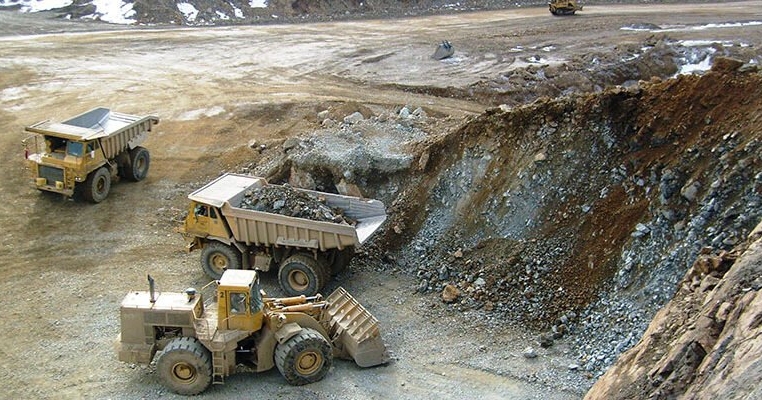Copper is essential for the transition to electric vehicles, but a study from professors at the University of Michigan and Cornell University expresses doubt that enough can be found to fill the demand, and suggests mass adoption of hybrids could be a more effective alternative.
“Copper is the mineral most fundamental to the human future because it is essential to electricity generation, distribution, and storage. Copper availability and demand determine the rate of electrification, which is the foundation of current climate policy,” according to the study, which was sponsored by the International Energy Forum.
The Forum is the world’s largest international organization of energy ministers from 70 countries and includes both producing and consuming nations. It has a broad mandate to examine all energy issues, including oil and gas, clean and renewable energy, sustainability, energy transitions and new technologies.
The study from U-M and Cornell, in Ithaca, NY, concludes copper cannot be mined quickly enough to keep up with current U.S. policy guidelines to transition the country’s electrical and vehicle infrastructure to renewable energy.
“Many studies have raised concerns that copper supply cannot meet the copper demands of both the ‘green energy’ transition and equitable global development, but the universal presumption persists that the copper needed for the green transition will somehow be available. This need not be the case for even the first step of vehicle electrification,” the study notes.
“To electrify the global vehicle fleet requires bringing into production 55% more new mines than would otherwise be needed,” the study says. “On the other hand, hybrid-electric vehicle manufacture would require negligible extra copper mining.”
The European Union expects to ban vehicles with internal-combustion engines by 2035, the same year the state of California expects to end sales of ICE vehicles.
To meet the copper needs of electrifying the global vehicle fleet, as many as six large new copper mines must be brought online annually over the next several decades. About 40% of the production from new mines will be required for electric vehicle-related grid upgrades, the study says.
The U.S. Inflation Reduction Act calls for 100% of cars manufactured to be electrified by 2035 (https://www.sustainability.gov/federalsustainabilityplan/fleet.html). The European Union also is calling for electric vehicles by 2035 and in China, the world’s largest market for new vehicles, more than a quarter of new vehicles sold are EVs.
But an EV requires three to five times as much copper as an ICE vehicle – not to mention the copper required for upgrades to the electric grid (see graphic, below).
“A normal Honda Accord needs about 40 pounds (18 kg) of copper. The same battery-electric Honda Accord needs almost 200 pounds (91 kg) of copper. Onshore wind turbines require about 10 tons (9,072 kg) of copper, and in offshore wind turbines, that amount can more than double,” according to Adam Simon, U-M professor of earth and environmental studies.

Says Simon, “We show in the paper that the amount of copper needed is essentially impossible for mining companies to produce.”
The study focuses on 120 years of global data from copper mining companies and calculated how much copper the U.S. electricity infrastructure and fleet of cars would need to upgrade to renewable energy. It found that renewable energy’s copper needs would outstrip what copper mines can produce at the current rate.
Copper is mined by 100 different companies on six continents, and the average time between discovering a new copper mineral deposit and getting a permit to build a mine is about 20 years, according to Simon.
The researchers found that between 2018 and 2050, the world will need to mine 115% more copper than has been mined in all human history up until 2018 just to meet “business as usual.” This would meet current copper needs and support the developing world without considering the “green energy” transition.
“I am a huge fan of the Inflation Reduction Act. It is fantastic. I’ve got solar panels, batteries and an electric vehicle,” Simon says. “I’m fully on board with the energy transition. However, it needs to be done in a way that’s achievable.”
Instead of fully electrifying the U.S. fleet of vehicles, the researchers suggest focusing on manufacturing hybrid vehicles.
“We know, for example, that a Toyota Prius has a slightly better impact on climate than a Tesla. Instead of producing 20 million electric vehicles in the United States and globally, 100 million battery electric vehicles each year, would it be more feasible to focus on building 20 million hybrid vehicles?”
The researchers say developing countries need more copper infrastructure, such as building an electrical grid for the approximately 1 billion people who do not yet have access to electricity or the approximately 2 billion people who do not have access to clean water or the 4 billion people who do not have access to sanitation facilities.
“Renewable energy technologies, clean water, wastewater, electricity – it cannot exist without copper. So, we then end up with tension between how much copper we need to build infrastructure in less-developed countries versus how much copper we need for the energy transition,” Simon says.
“We think our study highlights that significant progress can be made to reduce emissions in the United States,” he says. “However, the current – almost singular – emphasis on downstream manufacture of renewable energy technologies cannot be met by upstream mine production of copper and other metals without a complete mindset change about mining among environmental groups and policymakers.”





